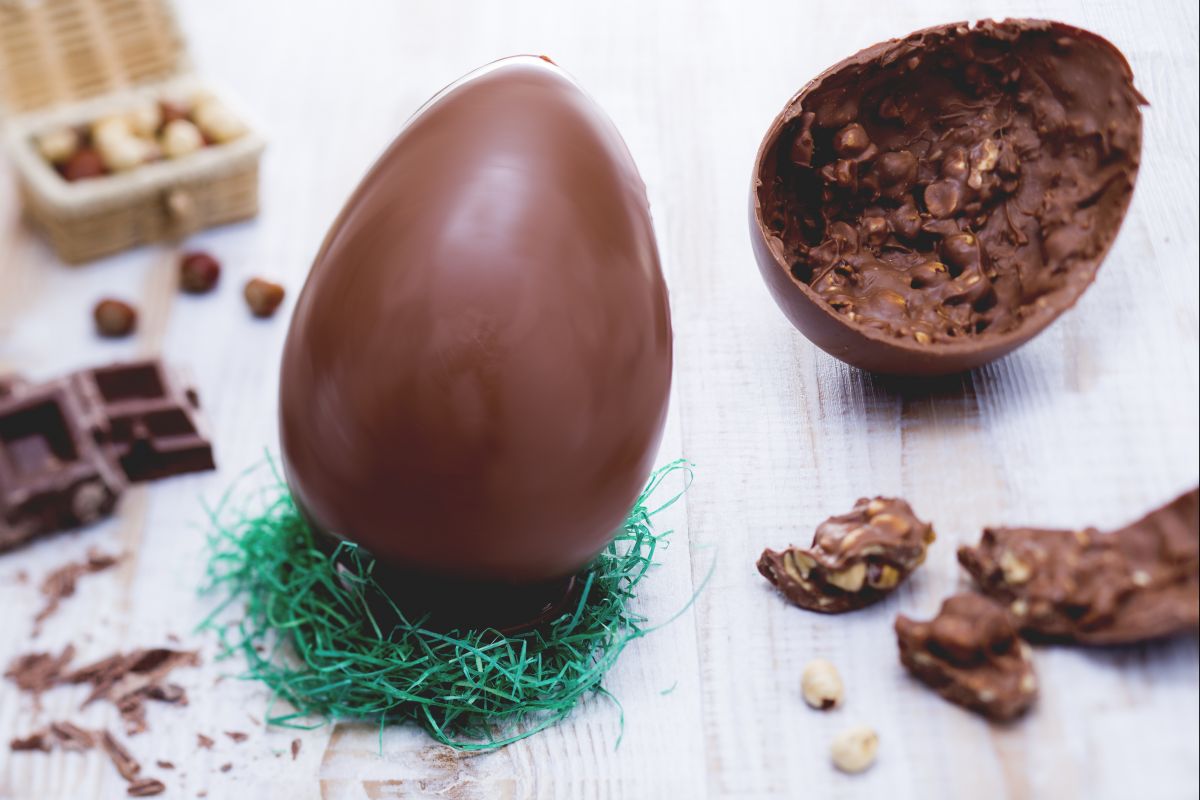Hazelnut Crunch Basket
- Average
- 60 min

When spring arrives in Italy, the milk chocolate and hazelnut Easter egg becomes a must-have treat on every table. Really good stuff. It’s more than just a candy; it’s a tradition that adds a special touch to the holiday. The magic of this homemade Easter egg recipe lies in the roasted hazelnuts mixed right into the milk chocolate. Toasting the hazelnuts for a few minutes enhances their flavor, creating a crunchy contrast with the smooth, creamy chocolate. Across Italy, each region has its own spin on this classic: some prefer dark chocolate, while others stick with milk or add hazelnut paste for a hazelnut praline Easter egg taste. And look, the excitement of cracking these eggs open, especially with a surprise hidden inside, is a cherished part of the celebration.
Everyone loves to add their own flair—so so unique. Some families opt for a mix of whole and chopped hazelnuts for added crunch, while others incorporate extra hazelnut cream for a richer texture. Crafting your own Easter egg with hazelnuts allows for customization—maybe you want it extra sweet or a touch more nutty, depending on your mood. Wrapping the finished egg in shiny foil evokes the charm of traditional Italian celebrations, where both kids and adults eagerly anticipate cracking the shell. For sure. Sharing in the joy. These Easter chocolate treats are more than just dessert; they’re a tradition that brings people together and adds a special warmth to the holiday. Plus, breaking open a big milk chocolate hazelnut Easter egg to reveal a surprise inside creates lasting memories. It’s one of those Easter dessert ideas that always feels worth the effort, especially when the end result is so delicious and satisfying. I gotta say, this treat is a staple of Italian Easter celebrations, blending tradition and taste in every bite.

To prepare the milk chocolate and hazelnut Easter egg, start with the tempering: chop the milk chocolate 1, then melt it in a double boiler (the water in the pot should reach just below the bottom of the bowl where you've placed the chocolate); measure the chocolate temperature with a kitchen thermometer 2 and when it reaches 113-122°F, pour 2/3 of it onto the marble slab placed on a work surface (keep the pot with hot water aside) 3; the marble slab serves to bring the chocolate quickly to the desired temperature and is essential for achieving an excellent result.

Start working the chocolate on the marble slab with a spatula 4 and a scraper, spreading it over the surface. When it reaches 81°F 5, transfer it to the bowl where you left the remaining 1/3 and mix. The chocolate should reach 84-86°F 6. If during these phases the temperature drops too much, always keep the double boiler pot with hot water on hand to slightly warm the chocolate. Conversely, if it is still too hot, repeat the spreading operation on marble with a small part of the chocolate.

At this point, pour the chocolate into an 7-inch long Easter egg mold, filling the two halves (7-8) and rotate the mold so that the chocolate is distributed evenly. Turn the mold upside down on a tray 9 and tap the edge of the mold with your hand to remove air bubbles; collect the excess chocolate in a small bowl. At this point, wait 10-15 minutes for the chocolate to solidify.

In the meantime, you can toast the hazelnuts in a pan for a few minutes 10, then coarsely chop them 11 and add them to the milk chocolate that you set aside 12.

Retrieve the mold and with a scraper, gently scrape off the excess chocolate from the edges of the mold to refine the edges of the egg; then pour the chocolate with hazelnuts 13 into the two halves, rotate to distribute it, and after 1 minute, turn it upside down to let the excess chocolate fall 14. Then let the mold crystallize with the open half facing up for about 2-3 hours. If the temperature exceeds 68°F, it is better to place the mold in the refrigerator to harden. Once solidified, gently unmold the two halves by applying light pressure on the mold 15

Heat a pan about 9 inches in diameter (larger than the egg) and then place it on the work surface. Place one egg half at a time with the edges adhering to the bottom of the pan: hold for a few moments, just enough to slightly warm the edges 16; insert the surprise then join the two halves 17. Hold for a few minutes to perfectly seal the halves and close the egg. Your milk chocolate and hazelnut Easter egg is ready to be gifted and enjoyed on Easter.